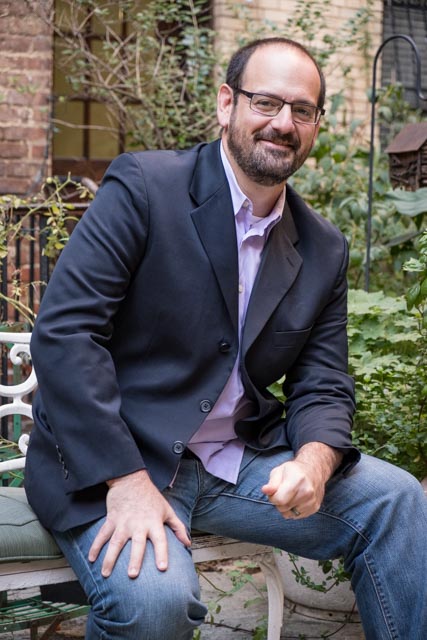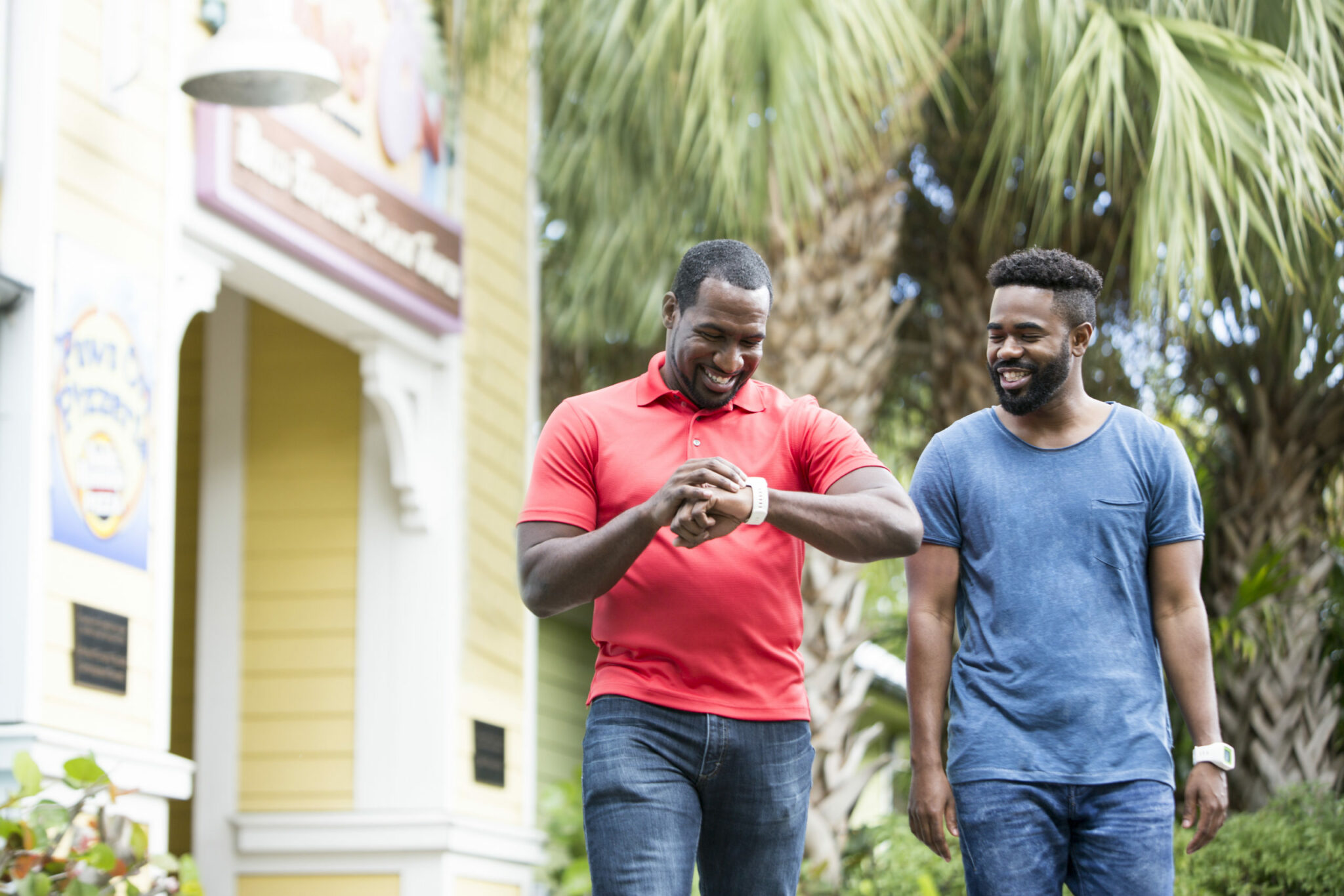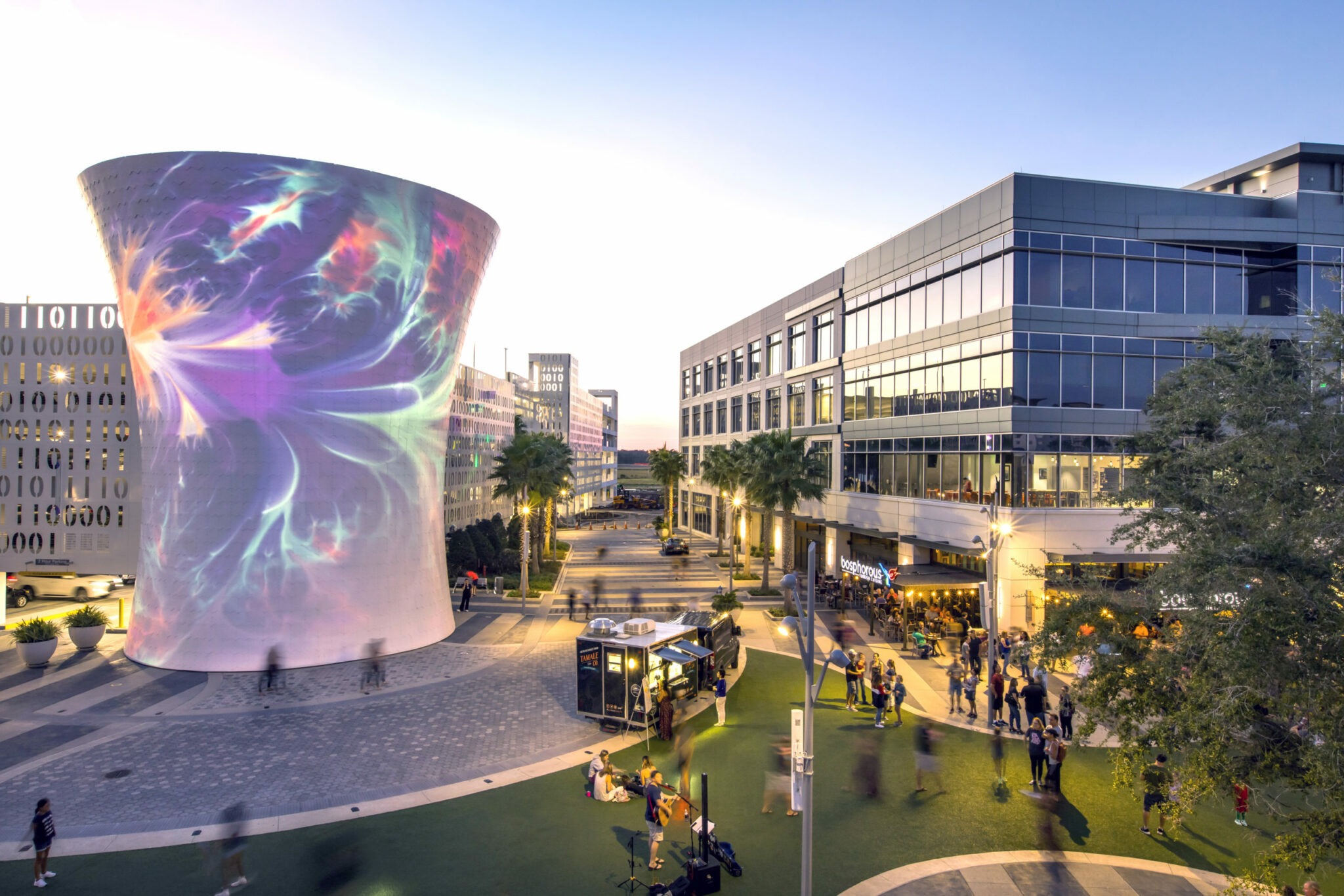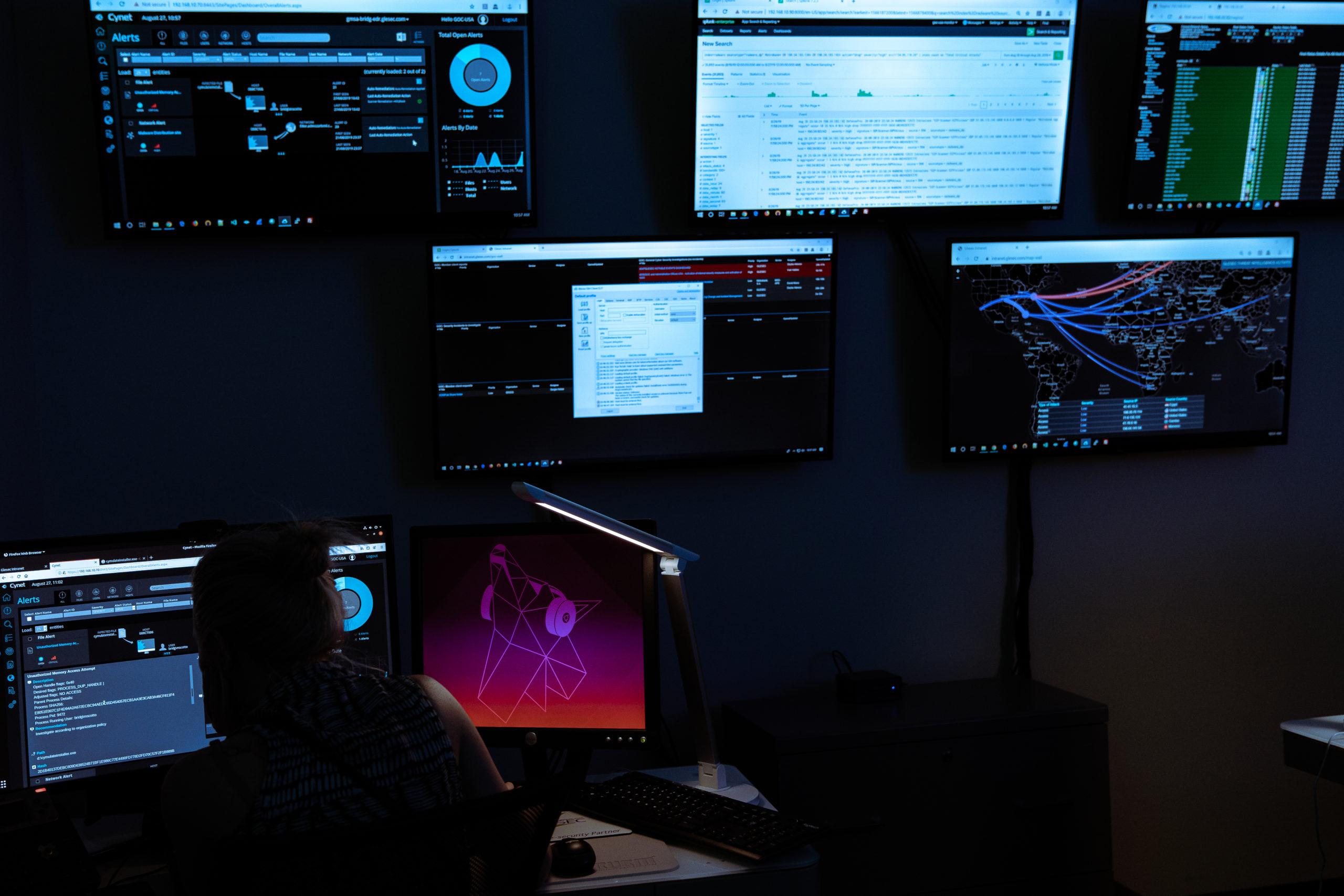David Furrow stepped to the edge of the platform and turned around. He leaned back, entrusting the slim rope and harness to keep him from plummeting to the concrete floor 30 feet below.
That was right about when the pit in his stomach made itself known.
“It’s not natural to put all your weight in that little harness and gear and then just hang up there,” Furrow says. “Standing on anything higher than 15 feet made me uncomfortable—it was nerve-racking, and it was all new to me.”
It was 2017, and Furrow was a long way from home. The former Army warrant officer and maintenance specialist had come to Orlando from North Dakota, where he had just started working as a Siemens Gamesa site manager for the Bison Wind Energy Center. The company operates the 500-megawatt-capacity wind farm for Minnesota Power and services the 165 wind turbines erected there.
Siemens had sent him to its main training center in the Americas as part of his introduction to the multinational power and industrial manufacturing company. Eventually, he’d have to get comfortable climbing to the top of the 300-foot structures that would be his charge.
But first, he had a lot to learn. He was now in the middle of training to repel from a suspended work platform during an emergency, like a fire breaking out in the nacelle—the top of the turbine where electricity generating equipment is located and the blades are attached.
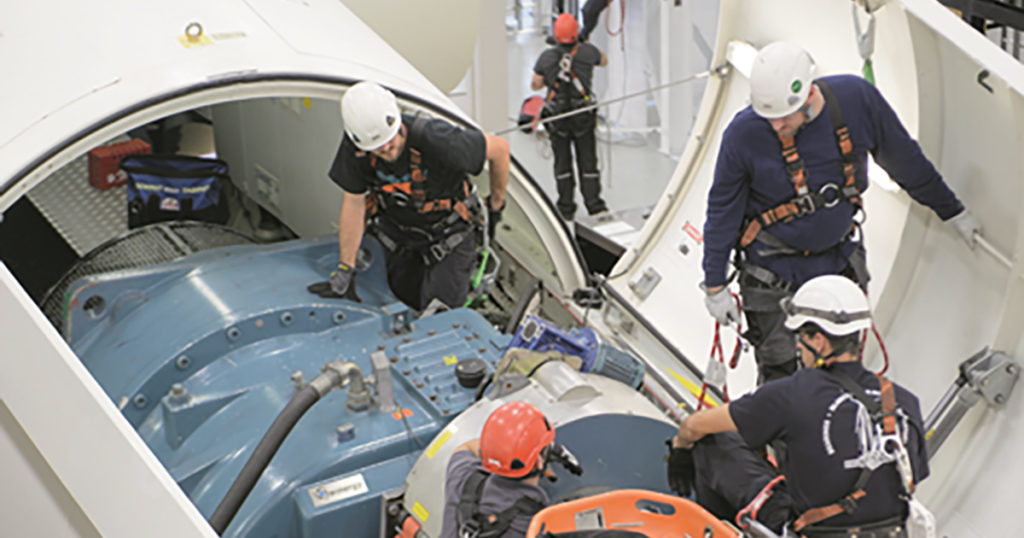
Besides the tower simulator that challenged his comfort with heights, the facility also houses classrooms along with two full-sized, operational nacelles and electrical equipment that serve as training simulators.
In the next three weeks, Furrow would learn everything from corporate human resources and safety policies to working with the hydraulic bolt tighteners and other tools specific to servicing wind turbines. He’d also go on to take higher-level maintenance technician courses.
“The training was really effective at getting me ready to get to work on the job site,” Furrow says. “My strongest memory of my time in Orlando was the professionalism of the facility and the trainers. They build your confidence up to climb and work on a 300-foot tower.”
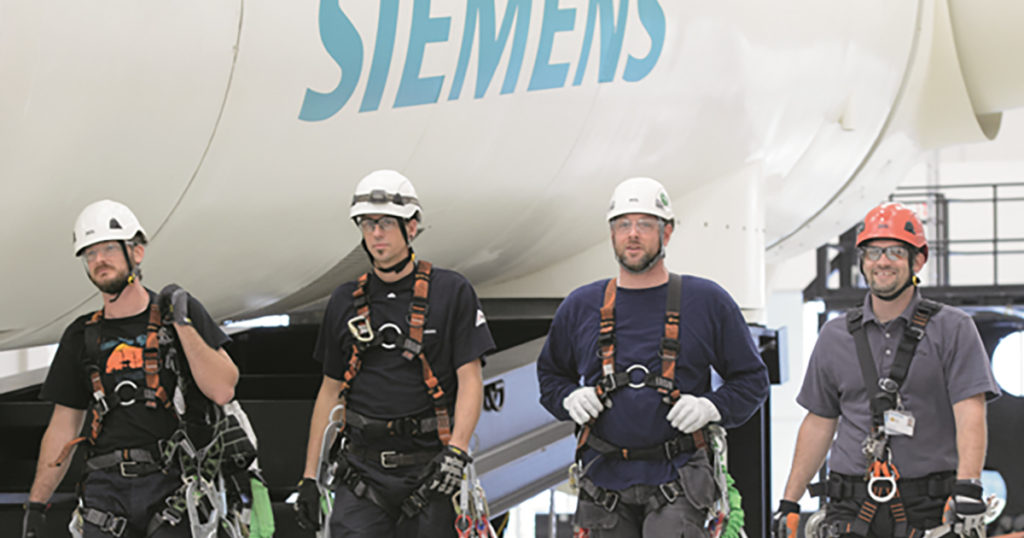
Perfect place to learn
Furrow’s experience training in Orlando wasn’t unusual. In a normal year—when a global pandemic hasn’t implemented flight restrictions worldwide—tens of thousands of people travel to the area to receive advanced, specialized instruction in everything from renewable energy to sports, accounting and robotic healthcare.
Next to the airport, JetBlue operates its pilot, inflight and operations crew training center called JetBlue University. Typically, up to 4,000 newly hired employees spend as much as 11 weeks on the airline’s campus, which also has a lodge where they stay. Things are a little different these days with the threat of COVID-19—the number of trainees has been fluctuating as the company has instituted social distancing and cleaning protocols.
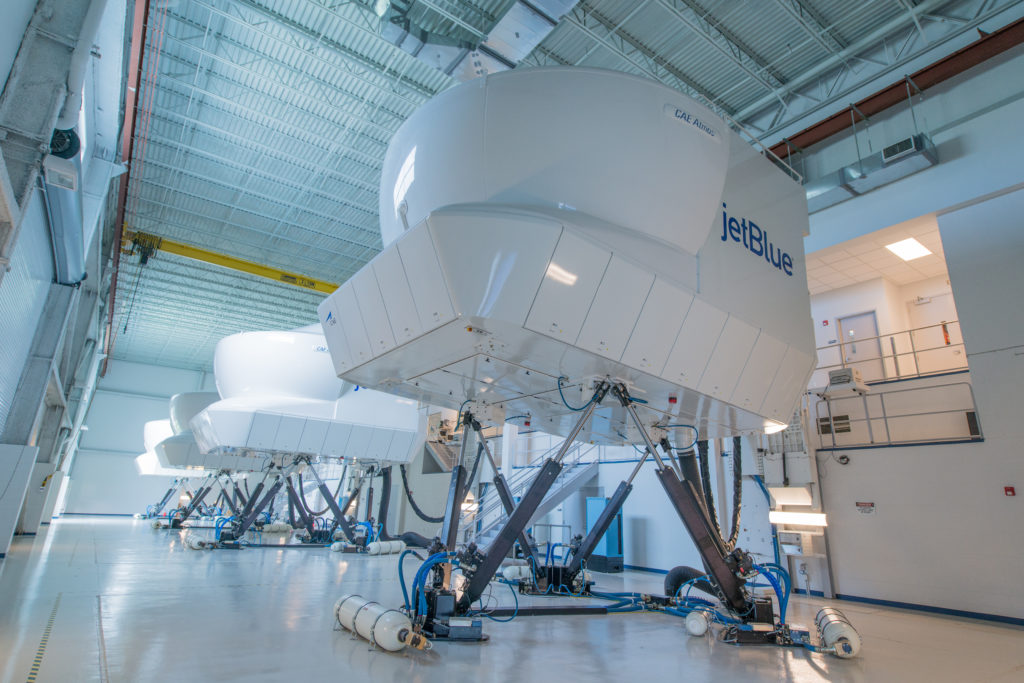
The high-tech, 220,000-square-foot facility is home to 300 faculty members who offer instruction to as many as 650 students on campus throughout a given week. Inside a cavernous 36-foot-high simulator hall, trainee pilots log hours on Airbus and Embraer aircraft simulators that comprise the JetBlue fleet. The hall also holds several cabin, door exit and airport simulators.
Jeff Kruse, JetBlue’s director of learning, says the company is adding floor space to the building for more classrooms and to bring in new simulators. He says the campus is also home to several airline support teams, many of whom get hired from the University of Central Florida and other local universities.
“We’ve been very pleased with our partnership and collaboration with the education programs at UCF, and the graduates that we’ve hired,” Kruse says.
JetBlue’s pilots come to Orlando from everywhere it flies—the U.S., the Caribbean and Latin America. With that geographic range, the city was the natural choice for the training center. The company’s training manager says the city was also attractive because of its robust modeling, simulation and training industry, which is at the core of the aviation simulator technology. “Orlando is a great place to be located because it has a large focus on simulation & training,” Kruse says. “We’ve partnered with a number of those technology organizations in the area.”
Orlando is a great place to be located because it has a large focus on simulation & training.
Jeff Kruse, JetBlue’s director of learning
A short drive from the airport, inside the city’s burgeoning Lake Nona planned community, training and coaching centers focusing on several industries have sprung up. KPMG just opened a learning and collaboration facility called KPMG Lakehouse for its 35,000 people in the United States. This purpose-built facility will ensure KPMG’s professionals are ahead of the curve on evolving technologies and disruptors and celebrate and reinforce the firm’s rich heritage, values and culture.
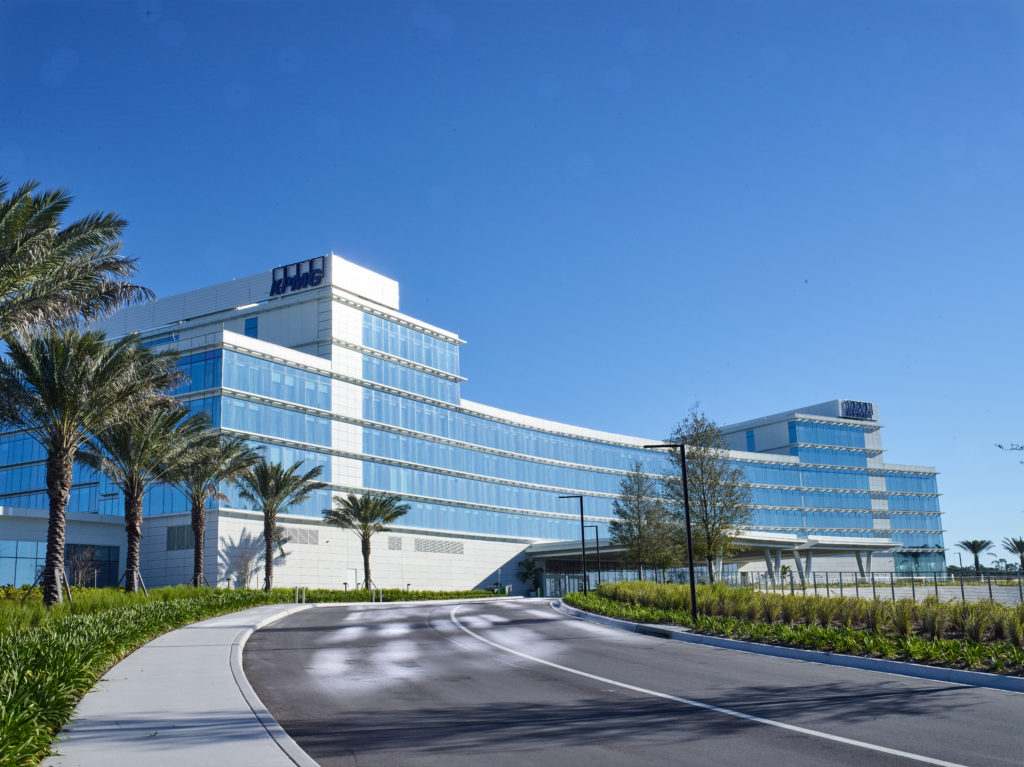
The firm chose Orlando out of 50 competitors. The city’s robust transportation options and direct flights from many of its offices weighed heavily into its decision. And neighboring organizations in the Lake Nona area that are also focused on training and enhancing human performance clinched the deal.
“We could have certainly built our own little oasis and put a fence around it,” David Turner, KPMG’s chief financial officer, told QZ. “[But] outside our four walls, we have a ready-made community that represents wellness, healthcare, technology, and innovation, which are key to who we are.”
Just down the road, the U.S. Tennis Association’s National Training Center improves player and coach performance. The organization’s player development program moves athletes from early development through collegiate play up to become top American prospects for the sport. Meanwhile, coaches learn how to execute their job better from performance and coaching analytics experts. The center reopened in June after developing a comprehensive sanitization process and procedures to keep visitors safe.
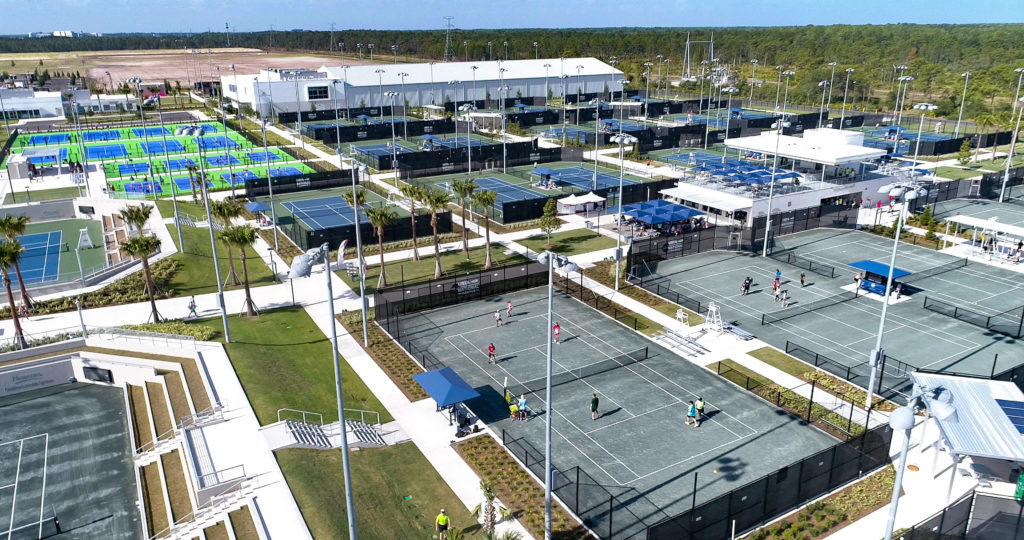
And a little farther down the street sits Johnson & Johnson’s Human Performance Institute. The whole-body training center offers professional development, leadership, stress management and nutrition courses to help business leaders, athletes and entire organizations optimize their energy and output. In 2018, the nearly three-decade-old institute invested $18 million into a new 35,000-square-foot LEED-certified building in Lake Nona.
In the wake of COVID, the institute has transitioned online. It is temporarily offering things like its flagship performance course and high-intensity workouts virtually under the tagline “If you can work from home, you can work OUT from home.”
“Johnson & Johnson’s investment in enhancing its Human Performance Institute experience in Lake Nona is a direct reflection of our company’s purpose to profoundly change the trajectory of health for humanity,” said Lowinn Kibbey, the center’s leader. “Enabling wellbeing is central to achieving this.”
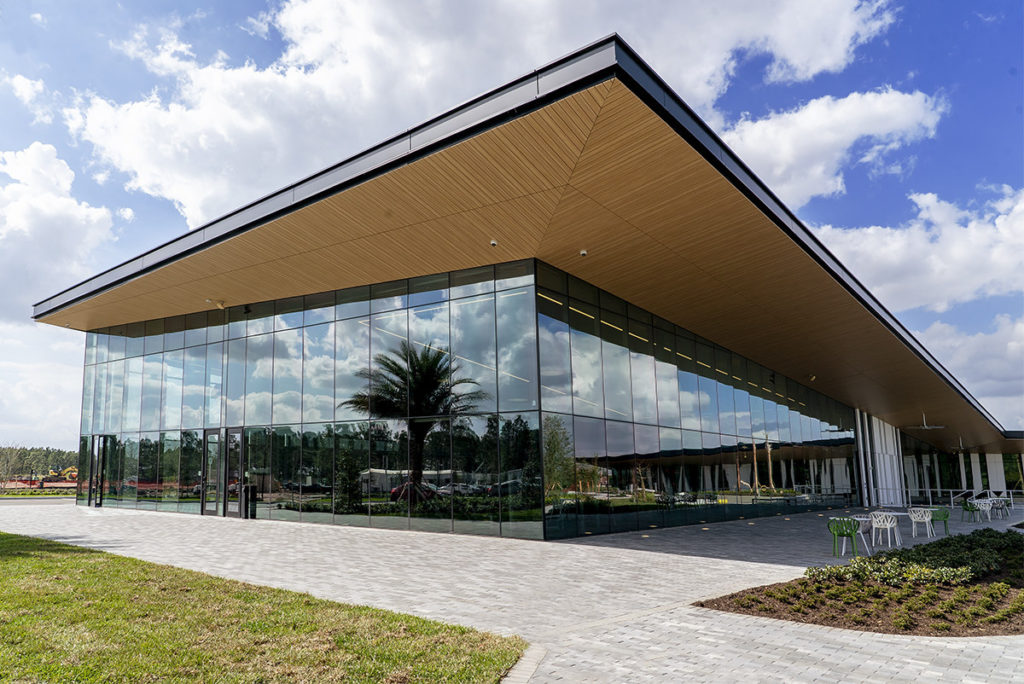
Infrastructure and talent attract trainers
Kibbey told the Orlando Sentinel that the organization, which had operated in Lake Nona for years in a smaller facility, had decided to stay put because of “the innovation energy in the area.” The nearby international airport and good weather didn’t hurt, either, he said.
Siemens Gamesa’s Dr. Cynthia Brown, the head of training at the facility, said her company saw similar advantages when it was weighing where to go after deciding to relocate from Houston.
First, Orlando is a natural place to send people because of its robust hospitality industry, which provides a range of dining, lodging and entertainment options. The area also has developed transportation infrastructure that makes it easy to bring people in for meetings, trainings or demonstrations using the simulator nacelles, whether they are recruits or executives.

“Orlando is centrally located for our entire Americas region,” Brown says. “It’s easy to get to, and we knew there would be people flying in from everywhere while our trainers are also traveling out to sites—the airport was key to our decision.”
She says wind turbine maintenance training brought nearly 4,500 employees to Orlando in 2019.
Also, Siemens actively recruits from the area workforce and universities to find employees for both the training center and to be deployed out into its service area. The training center alone has 40 employees. “We’ve been able to get a good selection of candidates with varied backgrounds,” she says. “The area is well equipped for us to find skilled people.” Fulfilling the vision to be the global leader in the renewable energy industry, Siemens now offers a wind turbine technician certificate to the general public through its Wind Academy.
As a trainee visiting the area, Siemens Gamesa’s Furrow offers evidence that Orlando brings together a nexus of world-class training, top-notch coaches and unique amenities. As proof, he remembers his trainers’ professionalism in getting him ready to tackle a sometimes dangerous and stressful job. He also remembers the side benefits of getting trained in the city—the restaurants and attractions right outside his hotel room.
“It was like I was on vacation, with a little homework thrown in,” he says. “I went out to the pool or drove not too long to get to the beach and studied there. It was awesome.”
